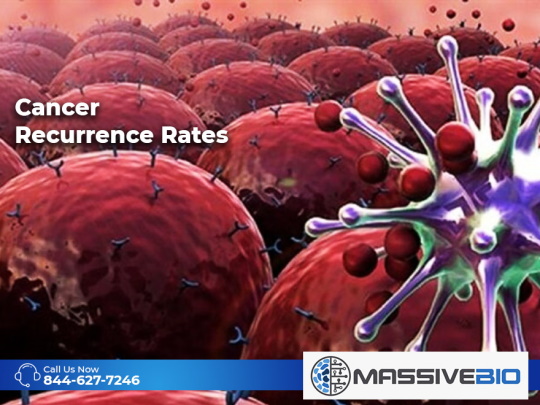Cancer recurrence rates are a crucial metric for understanding the long-term effectiveness of cancer treatments and the likelihood of cancer returning after a period of remission. These rates can vary significantly depending on the type of cancer, stage at diagnosis, treatment methods employed, and individual patient factors such as age, health status, and lifestyle.
Cancer recurrence rates also play a pivotal role in the development of new cancer therapies and in making decisions about post-treatment care plans. For many patients, understanding their specific risk of recurrence can influence their treatment choices, follow-up care intensity, and lifestyle adjustments. Recurrence can manifest as a local recurrence in the same place as the original tumor, regional recurrence in the nearby lymph nodes, or distant recurrence at a site far from where the cancer first started, which is often referred to as metastasis. By analyzing recurrence rates, researchers and clinicians can identify which cancers are more likely to recur, thereby providing targeted interventions and monitoring for those at highest risk.
What are the cancer recurrence rates and statistics? Cancer recurrence is when cancer is found in a patient after treatment has been completed and a period in remission has passed. When cancer recurs, it can either come back in the same location as the initial tumor or in another part of the body. A biopsy will be required to determine if it is a recurrence or a new cancer. If the biopsy proves that it is the same primary cancer as the patient had previously, even if it recurs in a different location of the body, it is known as a cancer recurrence. Alternately, if the biopsy reveals a different cancer type, it is known as a second primary cancer. While not as likely as a cancer recurrence, nearly one in five cancer cases diagnosed today are a second primary cancer.
For both a cancer recurrence and a second primary cancer, treatment can be more difficult than the previously. Physicians recognize that standard treatments, such as radiation and some chemotherapies, can increase the risk for developing additional cancers. There are ongoing clinical studies helping refine treatments to decrease long-term new cancer risk.
What Are the Types of Cancer Recurrence?
After a patient’s initial treatment is completed, cancerous cells may still be inside the body that are undetectable, but they can eventually grow to a point where they can be detected. The different types of recurrences cancer patients may develop include:
Local recurrence: The cancer is back in the same place as the original tumor.
Regional recurrence: The cancer is back in the lymph nodes nearby the original tumor’s location.
Distant recurrence: The cancer has spread to a different location than the original tumor. These tumors usually recur in the lungs, liver, brain, or bones. When cancer spreads to other parts of the body it is labeled as metastatic. For example, if the cancer originated in the lungs and is then detected in the brain, it is still called metastatic lung cancer.
In addition, understanding the risk of cancer recurrence involves examining the behaviors of cancerous cells and how they spread. Local recurrences typically occur due to the regrowth of cancer cells that remained in the treated area. This means a new tumor develops in the same location as the original tumor. Local recurrence is particularly observed in cancers treated with surgery because microscopic cancer cells may be left behind during the procedure.
Distant recurrence refers to the cancer spreading to a location in the body completely different from the original tumor’s location. This type of recurrence indicates the cancer has taken a more aggressive form and has transformed into metastatic disease. For instance, in HER2-positive breast cancer, the recurrence rate breast cancer can be quite variable, but aggressive treatments and targeted therapies can significantly reduce this rate. Distant recurrence usually occurs when cancer cells travel through the bloodstream or lymphatic system and form new tumors elsewhere in the body.
What is the Risk of Cancer Recurrence Rates?
It is difficult to determine one’s risk of having a cancer recurrence. Every individual has different factors that can increase or decrease the risk of a cancer recurrence; therefore, recurrence rates can be broad. The rate can be adjusted according to the type of treatment, length of remission, and subtype of the tumor. It is important to speak with your physician to learn your exact risk of recurrence or secondary tumor based on your medical history and follow the guidelines for management after you are in remission.
Breast cancer: Women with breast cancer have an overall 30% chance of recurrence. Many cases happen within five years of completing the initial treatment.
Cervical cancer: Of those with invasive cervical cancer, an estimated 35% will have a recurrence. For those with an early-stage diagnosis, the cancer is more easily treatable, therefore, the recurrence rate is lower.
Hodgkin’s Lymphoma: 10-13% of Hodgkin’s Lymphoma patients recur after primary treatment. An additional 20-50% of patients have a recurrence after completing second-line treatment.
Lymphoma (DLBCL): 30-40% of patients have a recurrence of non-Hodgkin’s Lymphomas most common subtype, DLBCL.
Prostate cancer: Within 5 years, 20-30% of prostate cancer patients will have a recurrence following the completion of initial treatment. A PSA level is performed via a blood test to monitor the protein level in the blood that is associated with prostate cancer.
Lung cancer: Overall, 30-75% of lung cancer patients will have a recurrence, but it depends on the subtype. For example, non-small cell lung cancer has a slightly lower recurrence rate of 30-50%.
Pancreatic cancer: 36% of patients will have a recurrence within one year after surgery is performed.
What type breast cancer has the highest recurrence rate?
Triple-negative breast cancer (TNBC) is known to have a higher recurrence rate compared to other types of breast cancer. TNBC lacks the three receptors commonly found in breast cancer: estrogen receptors (ER), progesterone receptors (PR), and human epidermal growth factor receptor 2 (HER2). This absence makes it more challenging to target with hormone therapy or medications that target HER2 receptors, options that are effective in other breast cancer types.
TNBC tends to be more aggressive, with a higher likelihood of recurrence within the first 3 to 5 years after treatment. It also has a tendency to recur outside of the breast, such as in the lungs, brain, or bones, which can often lead to a more serious prognosis. However, research is ongoing, and new treatments are being developed that aim to improve outcomes for patients with TNBC.
How to Monitor the Patient’s Condition After Treatment?
After initial treatment is completed, a physician will schedule regular appointments to monitor the patient’s condition and look for any signs of recurrence. Depending on the cancer type, most recurrences happen within 2-5 years of completing treatment. Other cancer types, such as breast cancer, can recur after 10 years. However, each day that goes by decreases the risk of the cancer relapsing.
Fear of cancer recurrence is the main concern for cancer survivors post treatment. According to the American Cancer Society (ACS), 60% of 1-year cancer survivors had moderate to severe concerns about their cancer recurring. This rate is thought to be higher for younger survivors. Also, caregivers report being concerned potential disease recurrence. To combat this fear, it is important to speak to your physician about your risk and what can be done to prevent additional risk factors.
In the context of regional recurrence, cancer re-emerges in the lymph nodes near the original tumor’s location, affecting parts of the body closely related to the primary cancer site. This recurrence type is distinguished from local and distant recurrence, providing specific challenges in both detection and treatment. When cancer returns after a period of remission, regardless of the location, it is referred to as cancer relaps. This term encompasses the fear and uncertainty faced by survivors, emphasizing the need for continuous monitoring and support to manage the psychological impact of living with the possibility of cancer returning.





4 Comments
I respect your piece of work, regards for all the good information on cancer recurrence. I am interested more on survival rates.
Hi Jacy,
Thank you for your comment, we are happy that you find our articles informative, when it comes to survival rates there are many factors involved. A good source with statistical cancer survival rates is cancer.org by American Cancer Society. Please check back to our page for new information as we update it frequently, and if you would like to discuss your situation our Patient Relations Coordinators are available by telephone or email.
I had breast cancer in 2000. I had both chemo and radiation. It matastisized in 2013 in the lower sacrum and then I did radiation again and continued using Famera. I have now contacted cancer again I the sacrum . What are my chances? Do I do radiation again and chemo or just radiation? I’m really worried this time. This is the third time
Hi Marjorie. We are so sorry to hear about your relapse. The answers to your questions are based on the analysis of your entire oncology history. The best course of action is to reach out to your oncologist and discuss these questions and concerns with him/her. Since he/she knows your history, he/she will be able to give the best recommendation for your next steps. Should you need to look into clinical trials, please reach out to us and we would be happy to assist.